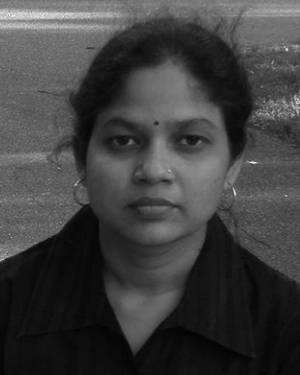Abstract:
In this paper, we consider the two-way relaying of the data of two earth stations (ESs) via satellite links. The satellite is considered to be of transparent type, which ...Show MoreMetadata
Abstract:
In this paper, we consider the two-way relaying of the data of two earth stations (ESs) via satellite links. The satellite is considered to be of transparent type, which only receives the signals over the uplink and broadcasts these signals with some transponder gain over its downlink frequencies. The two-way relaying signals are perturbed by the self-interference, which can only be removed with perfect knowledge of the uplink and downlink channels of the ESs. In satellite communication, it is difficult to generate the perfect information of the uplinks in the ESs due to the practical limitations, such that uplink and downlink channels of the ESs do not follow the reciprocity, and impossibility of reverse training as the satellite cannot transmit over uplink frequencies due to the transmit power limitations. Another factor that is highly undesirable from the channel state information (CSI) estimation perspective is large propagation delays of the satellite links. In this paper, we consider the design of a training protocol for two-way satellite relaying (TWSR) system, which is in complete agreement with (or does not violate) the practical limitations involved in the CSI estimation in satellite communications. It is found by analysis that if both ESs transmit orthogonal training sequences, then the satisfactory value of CSI for self-interference cancellation and decoding of the unknown symbols can be generated in each ES. Then, in order to analytically demonstrate the effect of CSI estimation over the performance of the TWSR system, we derive the average bit error rate and average capacity of the scheme over the Shadowed-Rician fading channels.
Published in: IEEE Transactions on Communications ( Volume: 64, Issue: 7, July 2016)
Funding Agency:

Department of Electronics and Communication Engineering, Northern India Engineering College, New Delhi, India
Arti M. K. (M’11) received the B.E. degree in electronics engineering from Madan Mohan Malviya Engineering College, Gorakhpur, India, in 1997, and the M.Tech. degree in communications engineering and the Ph.D. degree in wireless communications from the Department of Electrical Engineering, IIT Delhi, New Delhi, India, in 2014 and 2007, respectively.
She is currently an Associate Professor with the Department of Electronics...Show More
Arti M. K. (M’11) received the B.E. degree in electronics engineering from Madan Mohan Malviya Engineering College, Gorakhpur, India, in 1997, and the M.Tech. degree in communications engineering and the Ph.D. degree in wireless communications from the Department of Electrical Engineering, IIT Delhi, New Delhi, India, in 2014 and 2007, respectively.
She is currently an Associate Professor with the Department of Electronics...View more

Department of Electronics and Communication Engineering, Northern India Engineering College, New Delhi, India
Arti M. K. (M’11) received the B.E. degree in electronics engineering from Madan Mohan Malviya Engineering College, Gorakhpur, India, in 1997, and the M.Tech. degree in communications engineering and the Ph.D. degree in wireless communications from the Department of Electrical Engineering, IIT Delhi, New Delhi, India, in 2014 and 2007, respectively.
She is currently an Associate Professor with the Department of Electronics and Communications Engineering, Northern India Engineering College, Shastri Park, New Delhi. Her research interests include signal processing for multiple-input-multiple-output systems, cooperative communications, and satellite communications.
Arti M. K. (M’11) received the B.E. degree in electronics engineering from Madan Mohan Malviya Engineering College, Gorakhpur, India, in 1997, and the M.Tech. degree in communications engineering and the Ph.D. degree in wireless communications from the Department of Electrical Engineering, IIT Delhi, New Delhi, India, in 2014 and 2007, respectively.
She is currently an Associate Professor with the Department of Electronics and Communications Engineering, Northern India Engineering College, Shastri Park, New Delhi. Her research interests include signal processing for multiple-input-multiple-output systems, cooperative communications, and satellite communications.View more


